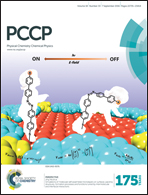Effect of long-range interactions on nanoparticle-induced aggregation
Abstract
The process of attaching liquid media molecules to dispersed nanoparticles is studied by numerically investigating the time evolution of the size distribution of the emerging aggregates. Within the considered mechanism of aggregation, both the primary particles and the resulting aggregates are assumed to connect freely dispersing molecules, but the particles and aggregates are not allowed to self-link or self-assemble at each evolution stage of the system, due to, e.g., repulsive interactions. The process of random attachment of dispersing molecules to immersed nanoparticles and aggregates is considered to be driven by attractive long-range interactions of the van der Waals type. The molecule binding rate is, in consequence, modeled as being dependent not only on the size and surface morphology of the existing aggregates, but also on the van der Waals forces, whose strength is itself treated as dependent on the aggregate size. It is demonstrated that these forces diminish, in general, the inhomogeneity of aggregate size. Such an effect is shown to be especially distinct when the interaction strength is relatively large but does not increase as aggregates increase in size, i.e., when strongly attracted media molecules functionalize the resultant aggregates to prevent the increase of the interaction strength. This result can be helpful to construct stable complex substances containing aggregates with low size dispersion. Surprisingly, the evolution of aggregating systems toward more significant inhomogeneity takes place when the interaction strength is initially large and increases fast enough with the size of aggregates.


 Please wait while we load your content...
Please wait while we load your content...